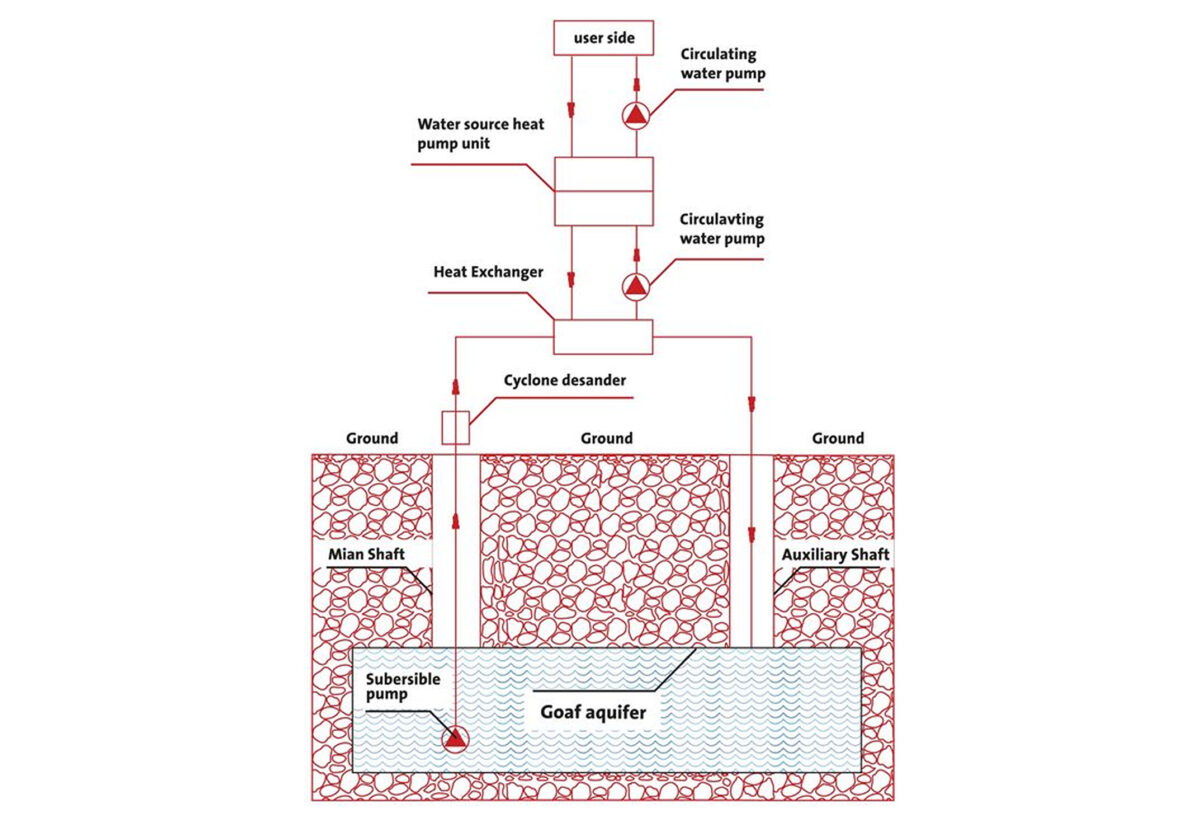A group of scientists from China's Shandong Jianzhu University has developed a water source heat pump heating system for residential applications. The system can utilize water geothermal resources from abandoned mining sites and is based on seasonal control, as it exclusively provides heating.
To enable proper deployment, the researchers investigated the pumping-recharge well arrangement for the system, in an attempt to minimize the heat transfixion phenomenon, which can occur in both open-loop and closed-loop systems. “If the pumping wells are improperly arranged, the low-temperature water recharged into the aquifer could cause the water temperature in the pumping wells to fluctuate, which could lead to a reduction in the efficiency of the water source heat pump unit,” they said. “This phenomenon involving a change in the water temperature in a given pumping well due to backfilling is referred to as heat transfixion.”
To find the optimal positioning, the academics developed a numerical calculation model that accounted for heat transfer and fluidity, among other terms. This model was fed with 14 different well arrangments, including three types involving one pumping well and one irrigation well, five types involving one pumping well and two irrigation wells linearly arranged, and six types involving one pumping well and two irrigation wells in a triangular arrangement.
“A pumping temperature decline of 0.5 K is referred to as the critical heat transfixion point. When the pumping temperature decreases by less than 0.5 K, heat transfixion does not occur, and when the pumping temperature decreases between 0.5 and 1 K, mild heat transfixion occurs,” they explained. “When the temperature decreases between 1 and 2 K, moderate heat transfixion occurs. When the temperature decreases by more than 2 K, severe heat transfixion occurs.”
The scientists simulated the operation of the heat pump system in a single residential building in the Chinese city of Weifang and compared its performance with that of a gas boiler. The building had a peak heating load of 118.02 kW and a cumulative annual heating load of 153,486.91 kWh.
Popular content
“The abandoned mine water source heat pump heating system mainly comprises a submersible pump, plate heat exchanger, water source heat pump, circulating water pump, and end section. Because the system is only used for heating,” the academics said.
The total energy consumption of the different systems was converted into standard coal consumption. According to the results, the mine water source heat pump heating system consumed 10,872 kg h of standard coal, while the gas boiler heating system consumed 28,622.43 kg h of standard coal. That accounts for a reduction of 17,750.43 kg, or 62.02%. CO2 emissions were reduced by 43,843.56 kg, SO2 emissions by 355.01 kg, and dust emissions by 177.50 kg.
“The operating cost could be reduced by 27,576.04 yuan ($3,872.99) during the heating season, accounting for 30.29% of the total cost savings, and the system investment cost could be completely recovered in approximately 4.65 years,” the research group concluded.
The system was presented in the paper “Investigation of Theoretical Models, Pumping-Recharge Well Arrangements and System Performance of Abandoned Mine Water Source Heat Pump,” published on Energy and Built Environment.
This content is protected by copyright and may not be reused. If you want to cooperate with us and would like to reuse some of our content, please contact: editors@pv-magazine.com.


By submitting this form you agree to pv magazine using your data for the purposes of publishing your comment.
Your personal data will only be disclosed or otherwise transmitted to third parties for the purposes of spam filtering or if this is necessary for technical maintenance of the website. Any other transfer to third parties will not take place unless this is justified on the basis of applicable data protection regulations or if pv magazine is legally obliged to do so.
You may revoke this consent at any time with effect for the future, in which case your personal data will be deleted immediately. Otherwise, your data will be deleted if pv magazine has processed your request or the purpose of data storage is fulfilled.
Further information on data privacy can be found in our Data Protection Policy.